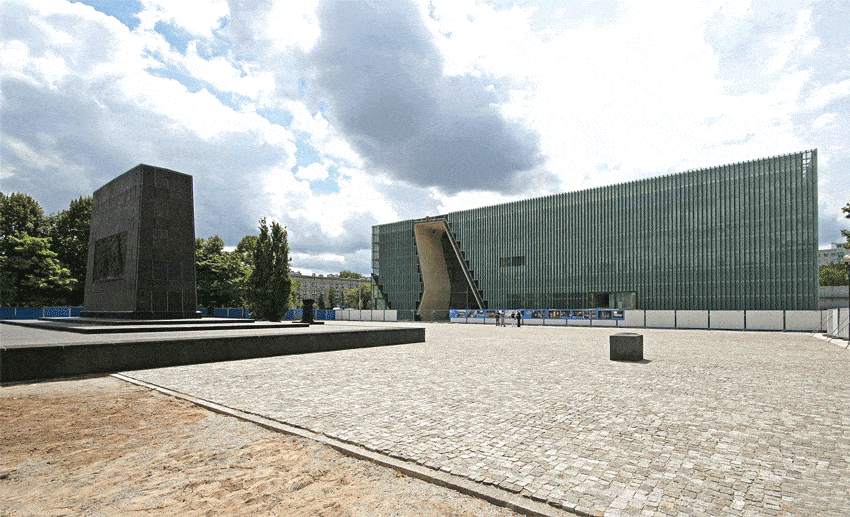
In the three decades since the Revolution of 1989, Poland’s many cultural achievements include mastering the craft of creating the 21st-century historical museum.
Examples include the Warsaw Uprising Museum in the national capital; Kraków Under Nazi Occupation 1939-1945, built on the site of Oskar Schindler’s factory; and The Family Home of John Paul II — Papal Museum, in the late pope’s hometown, Wadowice.
Each of these exemplary museums combines a traditional, linear approach to telling a historical story, using the artifacts often found in such exhibitions, with brilliantly executed interactive displays that lead the visitor “into” the history being explored. I know of nothing so well done in the US; the Polish museums put the Smithsonian’s Museum of American History to shame.
How do we gratefully receive and honour ancient rituals and forms of worship while avoiding their fossilisation and allowing for their developmenT?
The greatest of these contemporary Polish efforts is Polin: The Museum of the History of Polish Jews, which is built on the site of the wartime Warsaw Ghetto and opened in 2013. I spent many hours there in October 2016 and left with the thought that this just might be the greatest historical museum in the world.
Using the contemporary Polish method of combining traditional ways of historical storytelling with digital and interactive displays, Polin (which in Hebrew can mean either “Poland” on “Here you shall rest”) unveils a complex, too-often tragic, and unfailingly interesting story of overlapping cultures with rigorous honesty and palpable compassion.
Religious and cultural artifacts, paintings and photographs, and those interactive displays combine to immerse the visitor in a millennium of human experiences and encounters, all of which teach important truths. Polin’s 430-page catalogue has an honored place in my home, and I never cease to be amazed by its riches.
During my visit to Polin in 2016, I was struck by how much of the history of Hasidic Judaism in Poland and Lithuania was somehow familiar. And then I figured out why: it was thanks to two wonderful novels by the late Chaim Potok: The Chosen, published in 1967, and its sequel, The Promise, published in 1969.
I recently re-read both books and was struck again by how much of an education in central and eastern European Jewish history Potok offers his readers through the character of David Malter, an expatriate Russian Talmudic scholar living in Brooklyn.
Hasidic Jews who have somehow escaped Hitler’s murder machine are resettling in Professor Malter’s neighbourhood in the immediate post-World War II years, and Malter’s explanations to his son, Reuven (the novels’ narrator), of how the Hasidim came to be and what they believe are fascinating. They’re also accurately crafted nuggets of the turbulent religious and cultural history that’s explicated in depth at Polin.
I’ve probably read The Chosen and The Promise a half-dozen times, and on each reading I find that, in David Malter, Chaim Potok drew a portrait of the perfect father: a man of firm conviction, but also of infinite patience with the struggles of youth and the eternal foibles of humanity; a deeply pious and traditional man who is not afraid of modernity; a profound teacher whose reverence for revealed truth does not lock him into an intellectual bunker; a parent with whom an emerging adult can talk freely, knowing that the older person respects the intelligence and freedom of the younger.
Potok’s novels are intensely Jewish and deeply American in a way that hasn’t really been replicated by US Catholic authors. American Catholicism could use a Chaim Potok today.
For the fictional battles in The Chosen and The Promise between David Malter and his reform-minded colleagues in a modern Orthodox yeshiva, and the scholars at the venerable Hirsch Talmudic academy who refuse to concede an inch to modern methods of studying ancient texts, mirror some of the modern-day challenges in the US Church.
How can we learn from what modern archaeology, linguistic studies, and historical research teach us about the Bible without treating the Scriptural text as a literary corpse to be dissected? How do we gratefully receive and honour ancient rituals and forms of worship while avoiding their fossilisation and allowing for their development? How do religious authorities and religious scholars interact for their mutual benefit, and for the good of the community they share?
Reading The Chosen and The Promise is an uplifting experience. And, in the ways of Providence, it happened that I finished the latter on the day the Divine Office included this great text from St Paul’s Letter to the Romans: “To the Israelites belong the adoption, the glory, the covenants, the law-giving, the worship, and the promises; theirs were the patriarchs, and from them came the Messiah….”
